West Nusa Tenggara
NTB
Nusa Tenggara Barat - West Nusa Tenggara
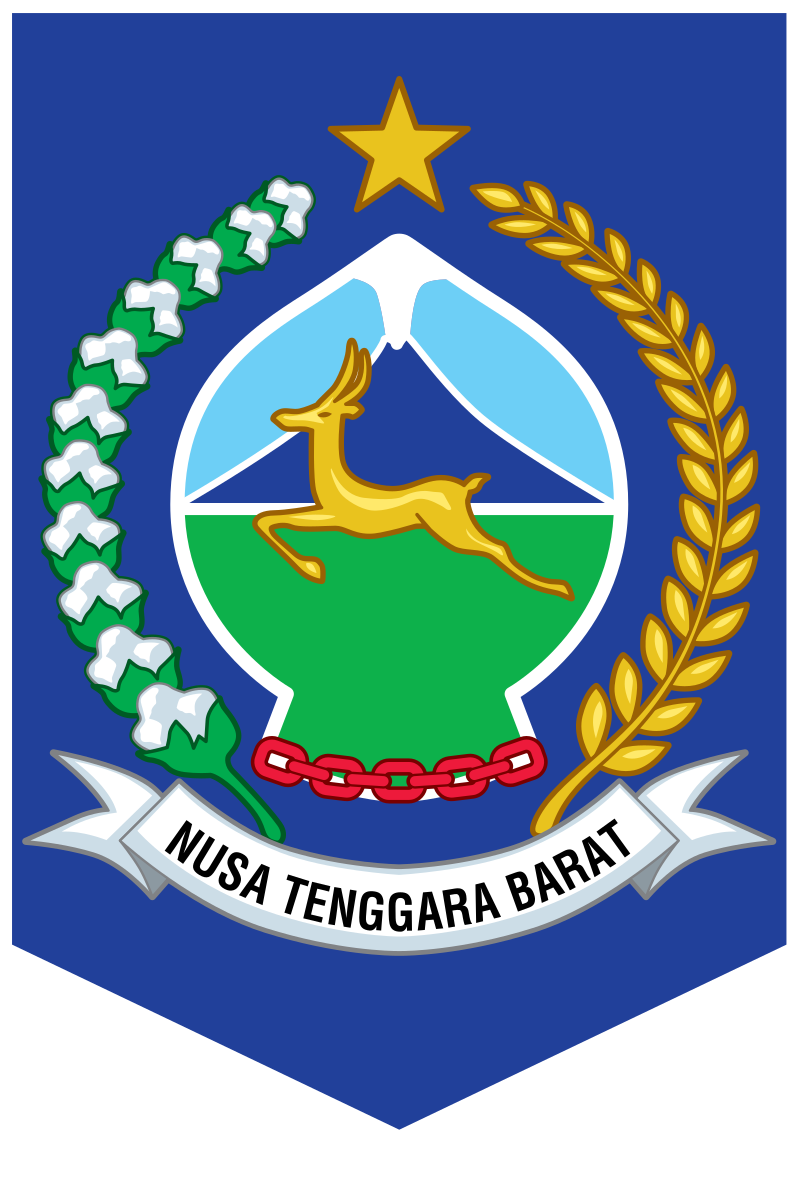 West Nusa Tenggara (Indonesian: Nusa Tenggara Barat – NTB) is a province of Indonesia. It comprises the western portion of the Lesser Sunda Islands, with the exception of Bali which is its own province. Mataram, on Lombok, is the capital and largest city of the province.
West Nusa Tenggara (Indonesian: Nusa Tenggara Barat – NTB) is a province of Indonesia. It comprises the western portion of the Lesser Sunda Islands, with the exception of Bali which is its own province. Mataram, on Lombok, is the capital and largest city of the province.
The 2010 census recorded the population at 4,500,212; the total rose to 4,830,118 at the 2015 Census and 5,320,092 at the 2020 Census. The province’s area is 20,153.15 km2. The two largest islands by far in the province are Lombok in the west and the larger Sumbawa island in the east.
The existence of the status of the province West Nusa Tenggara did not come by itself. The struggle demanded that the formation of West Nusa Tenggara province took place for quite a long time. West Nusa Tenggara province previously had been part of the State of East Indonesia in the conception of the Republic of Indonesia States, and be part of the small Sunda province after recognition of Indonesian sovereignty.
Along with the dynamics and after some time, the process of changing the constitutional system after the proclamation of the Independence of the Republic of Indonesia then formed the province of West Nusa Tenggara. With the enactment of Law No. 64 of 1958 Date August 14, 1958, on the Establishment of Regions Autonomous of Bali, West Nusa Tenggara and East Nusa Tenggara, the province was officially established and the first Governor of the province was AR. Moh. Ruslan Djakraningrat.
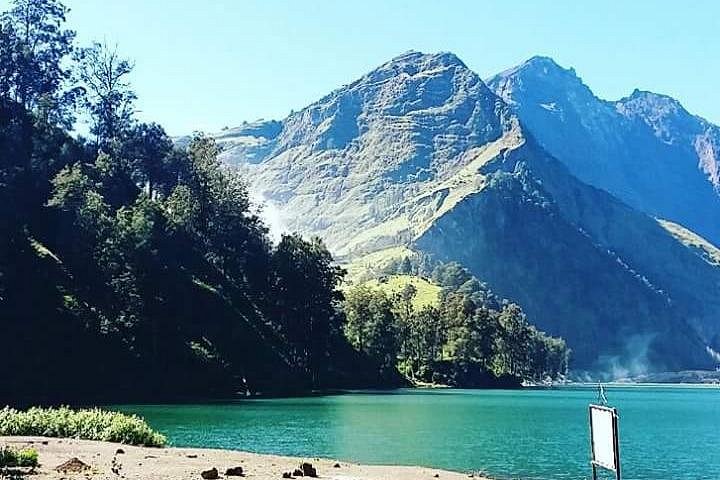 Geography
Geography
Terrain. West Nusa Tenggara has two kinds of landscape. The first is the island of Lombok with the coastline fairly straight, with the central to eastern part in the form of mountains, and coastal lowlands in the east. The second is Sumbawa Island with a jagged coastline because of the many headlands and bays, and the central part is covered with hills and limestone mountains.
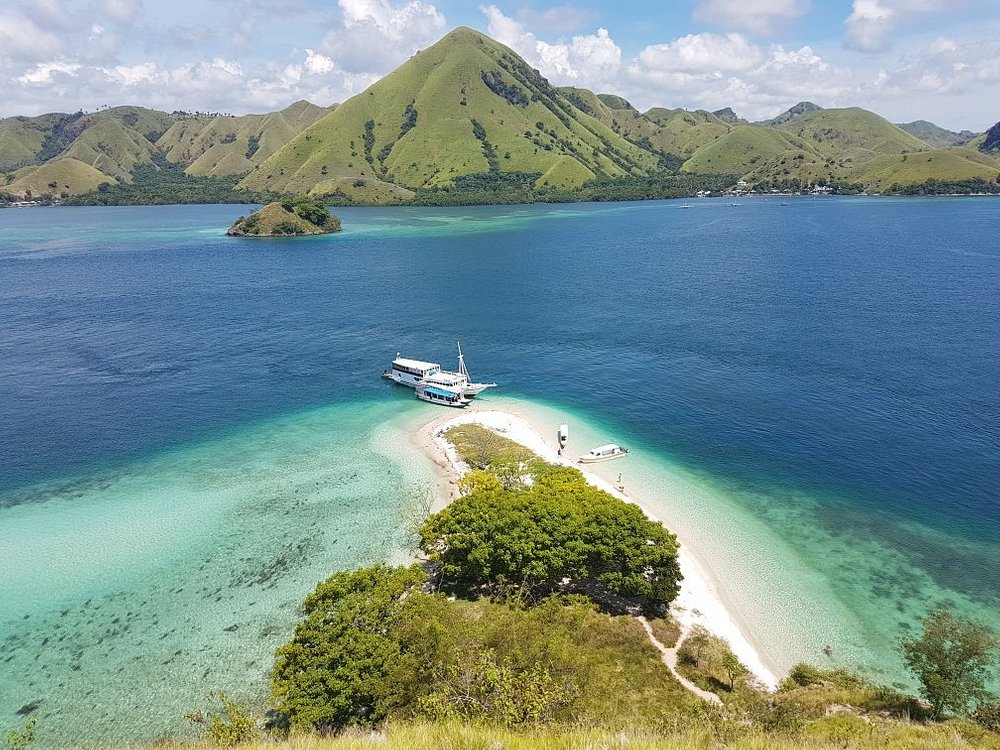
Selong (capital of East Lombok Regency) is a city that has the highest altitude, which is 148 m above sea level, while the lowest Raba at 13 m above sea level. Of the seven mountains on the island of Lombok, Mount Rinjani is the highest mountain with an altitude of 3,775 m, while Mount Tambora on Sumbawa is the highest mountain with an altitude of 2,851 m.
Climate. Like the rest of Indonesia, NTB has a tropical climate. Based on statistics from the meteorological institute, the maximum temperature in 2001 ranged from 30.9 to 32.1 °C, and the minimum temperature ranged between 20.6 and 24.5 °C. The highest temperatures occur in September and the lowest is in November. Being tropical, NTB has a high average relative humidity, which is between 48 and 95%.
West Nusa Tenggara has relatively little rainfall compared to the western region of Indonesia. Maximum rainfall in the province occurs in January and minimum rainfall occurs in August.
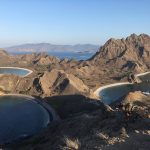
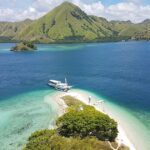
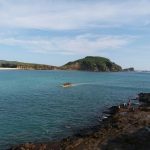

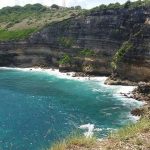
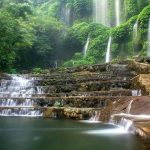
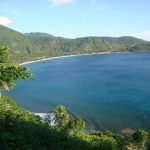












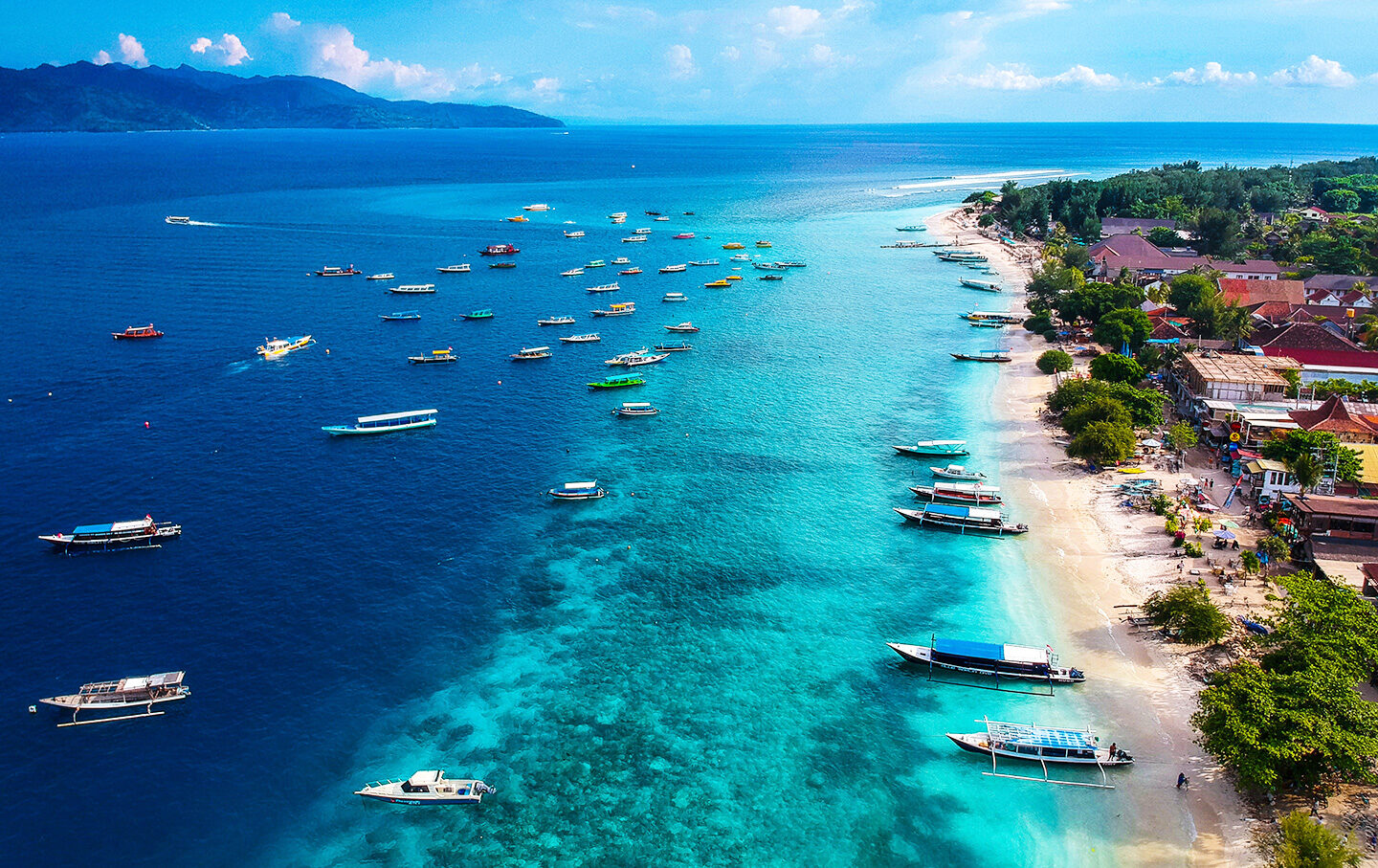 Economy
The area of West Nusa Tenggara (NTB) has very beautiful natural scenery, be it the mountains or the beach. This has caused many tourists from other parts of Indonesia and other countries to flock to the province due to its stunning scenery.
The Gili Islands (Indonesian: Tiga Gili [Three Gilis], Kepulauan Gili [Gili Islands]) are an archipelago of three small islands or Gili island triplets — Gili Trawangan, Gili Meno and Gili Air — just off the northwest coast of Lombok. The islands are a tourist destination. Each island has several resorts, usually consisting of a collection of huts and hotels for tourists.
In addition to the panorama of beautiful tourist attractions, food crops, and horticulture developed and cultivated by the community that is profitable for farmers, among others, are soybeans, peanuts, corn, green beans, peppers, onions, mangoes, bananas, and pineapples. In addition to the nine kinds of commodities in the regions, other horticultural commodities that can be developed are potatoes, carrots, apples, and grapes.
As for fisheries, NTB has 3 areas of fisheries development:
Economy
The area of West Nusa Tenggara (NTB) has very beautiful natural scenery, be it the mountains or the beach. This has caused many tourists from other parts of Indonesia and other countries to flock to the province due to its stunning scenery.
The Gili Islands (Indonesian: Tiga Gili [Three Gilis], Kepulauan Gili [Gili Islands]) are an archipelago of three small islands or Gili island triplets — Gili Trawangan, Gili Meno and Gili Air — just off the northwest coast of Lombok. The islands are a tourist destination. Each island has several resorts, usually consisting of a collection of huts and hotels for tourists.
In addition to the panorama of beautiful tourist attractions, food crops, and horticulture developed and cultivated by the community that is profitable for farmers, among others, are soybeans, peanuts, corn, green beans, peppers, onions, mangoes, bananas, and pineapples. In addition to the nine kinds of commodities in the regions, other horticultural commodities that can be developed are potatoes, carrots, apples, and grapes.
As for fisheries, NTB has 3 areas of fisheries development:
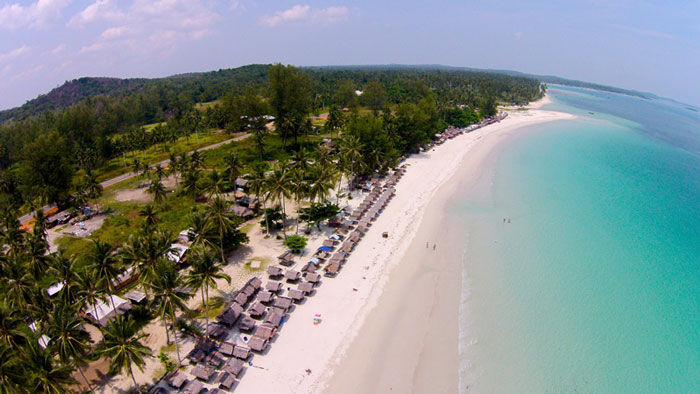
- The island of Lombok, with a priority on the development of marine aquaculture and freshwater fisheries, brackish water aquaculture (ponds), catching public waters;
- The western part of Sumbawa Island, priority on the development of brackishwater aquaculture (ponds), mariculture, arrest, public waters, and freshwater aquaculture;
- Eastern part of Sumbawa Island with priority on the development of catching, mariculture, public waters, and freshwater aquaculture.
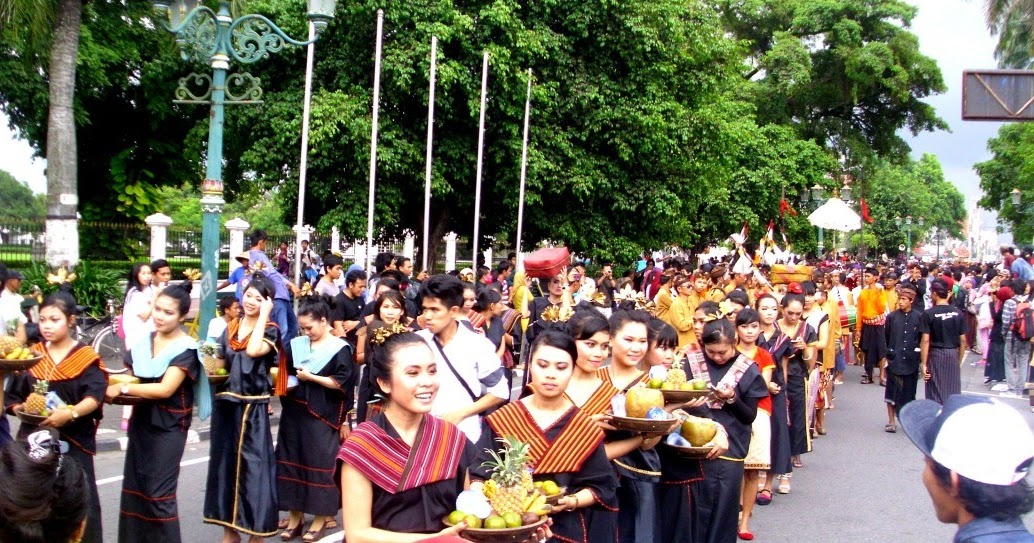 Demography
Demography
Population. Lombok is mainly inhabited by the Sasak ethnic group, with a minority Balinese population, and Sumbawa is inhabited by Sumbawa and Bimanese ethnic groups. Each of these groups has a local language associated with it as well. The population of the province was 4.5 million at the 2010 census, 4.83 million at the 2015 Census and 5.32 million at the 2020 Census. 70.65% of the population lives on Lombok (at the 2020 census), which has only 23.5% of the area.
Ethnic. The majority of the population inhabiting the province of West Nusa Tenggara is the local indigenous tribe, which is 93.33% including the Sasak tribe 67.57% and the Bima, Sumbawa, Dompu and others 25.76%. Based on data from the 2010 Indonesian Population Census, the following is the ethnic composition or ethnic group in the province of West Nusa Tenggara: Sasak (67.57%); Bima, Sumbawa, Dompu and Others (25.76%); Bali (2.66%); Java (1.76%); Bugis (0.45%); Origin from East Nusa Tenggara (NTT) (0.27%); Chinese (0.16%); and Others (1.37%).
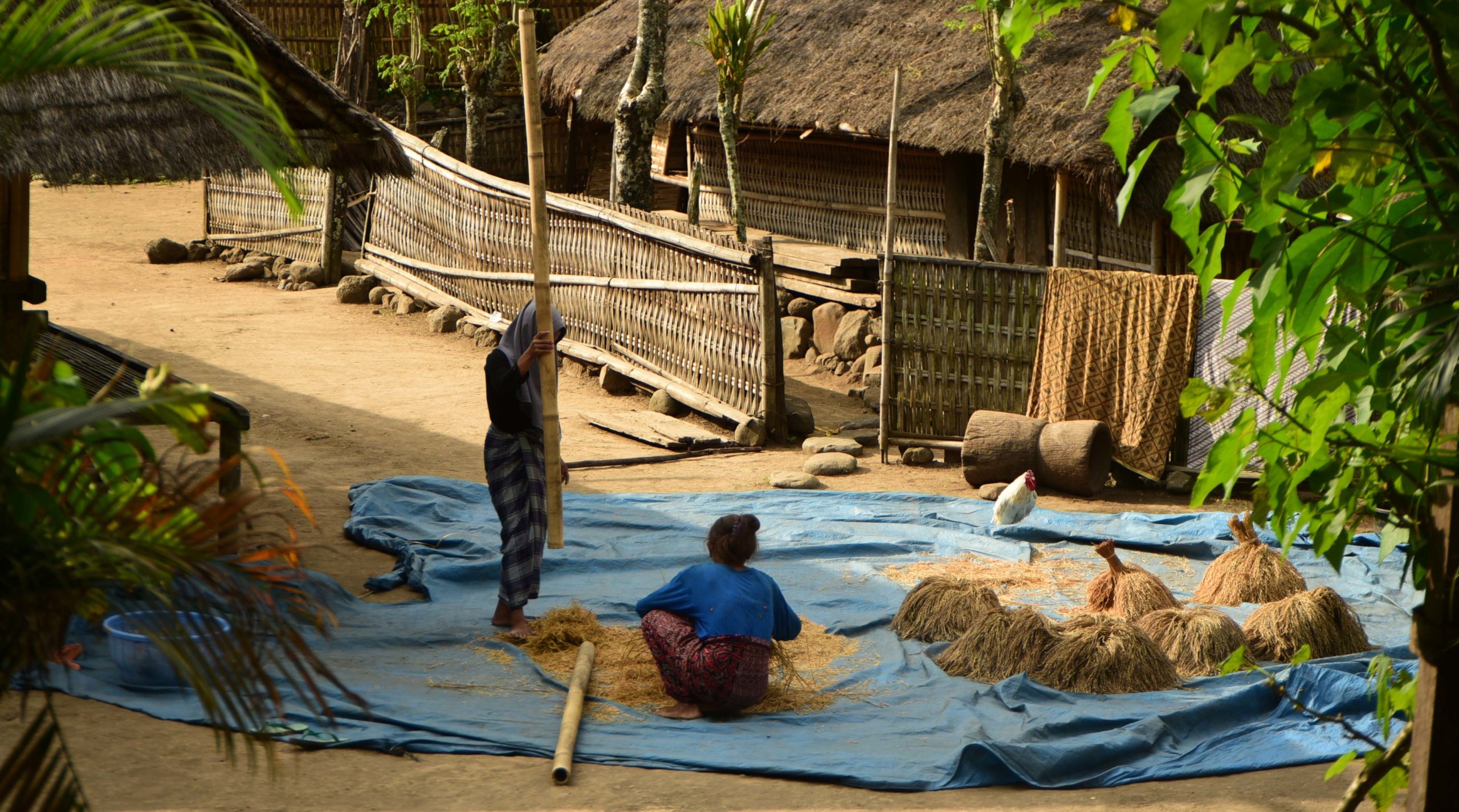 Language
Language
The Sasak language is widely used by the people who inhabit the island of Lombok. Sasak language has three levels, namely soft, medium and rough. There are five dialects of the Sasak language, one of which is the Pejangi, Selaparang and Bayan dialects. The Sasak language has a blend of Balinese and Javanese. In terms of script/writing aspects, the Sasak language has similarities with the Javanese-Bali language, for example, there are similarities in the use of the scripts Ha, Na, Ca, Ra Ka and others.
However, in terms of the pronunciation of the Sasak language, it is similar to Balinese. Meanwhile, based on the ethnologue, the Sasak language belongs to the Austronesian language family, Malayo Polynesian, Nuclear Malayo Polynesian, Sundanese-Sulawesi and Sasak-Balinese.
The Sumbawa language or also called the Semawa language’ is a language that is spread throughout the Sumbawa area. The various dialects are Semawa’, Taliwang, Barturotok/Batulante, Ropangsuri, Selesek, Bee, Dado, Jeluar, Tanganam, Geranta and Jeruek dialects. Before achieving this type of dialect diversity, Sumbawa initially consisted of two languages, namely the Taliwang-Jereweh-Tongo pre-dialect and the large Sumbawa dialect (the forerunner of the Suren language).

However, in its development, the Taliwang-Jereweh-Tongo pre-dialect was split into three independent dialects. Based on the distribution of use, the Sumbawa and Baturotok dialects and other dialects are used in the Ropang Mountains region. While the Taliwang, Tongo and Jaraweh dialects are used by residents south of Lunyuk. The language of inter-ethnic unity is the Sumbawa Besar language.
The Bima language is used by the people who inhabit the Bima, Dompu and Sangiang areas. The Bima language only has two levels, namely smooth and rough. There are three kinds of dialects, namely Bima, Donggo and Sangiang dialects.
The use of Balinese in NTB is inseparable from the role of history and geography. Historically, the King of Bali XVII once ruled West Lombok, while geographically the Province of NTB is close to Bali.
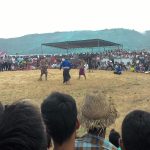
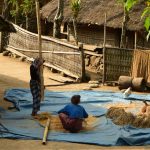

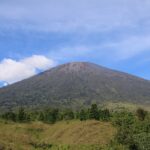








Culture
Traditional Dance
Basically, traditional dance is a type of dance that grows among the people. Thus, traditional dance is often also referred to as folk dance. There are several traditional dances in the province of West Nusa Tenggara, including:
 Gandrung Lombok
Gandrung Lombok
As a type of traditional dance that is part of the traditional arts of West Nusa Tenggara, the Lombok gandrung dance was already popular before the last Lombok kingdom fell in 1894.
At first glance, this traditional dance is similar to the gandrung dance originating from Banyuwangi and Bali.
However, what sets it apart is the costumes worn, the movements and the way they are presented.
The reason is, the Lombok gandrung dance at that time was used as a dance, to entertain the soldiers when they returned from the battlefield. But along with the times, this dance is used as entertainment for local people who have historical and artistic values in it.
 Gendang Beleq
Gendang Beleq
The traditional art of West Nusa Tenggara in the second form of dance is the gendang beleq dance. This traditional dance can be said to be very unique, because it is danced by the dancers while playing the gendang beleq musical instrument.
Therefore, this dance is called the gendang beleq dance.
Gendang beleq itself is a large traditional Sasak tribal musical instrument, which is played in groups in the form of an orchestra. However, since it was made as one of the traditional dances, this dance by the Sasak people has been considered a tradition that must be done, because it is an art from the legacy of the Selaparang Kingdom of Lombok. Not only that, this dance is also used as a medium for spreading Islam around the Lombok area. Thus, at the time of the performance, religious lectures or other religious activities will be inserted.
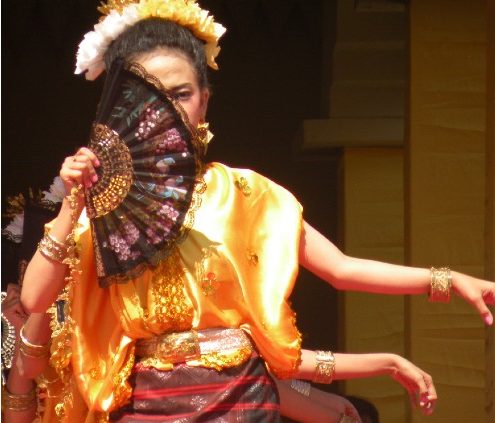 Lenggo
Lenggo
This traditional dance created by Datuk Raja Lelo, a preacher from West Sumatra was first referred to as the Malay lenggo dance. This dance was deliberately created for the Hanta Ua Pua traditional ceremony held in the Bima area.
The lenggo dance is also divided into two types, namely the lenggo mone dance and the mbojo lenggo dance. The lenggo mone dance itself is the name of the Bima community, for the lenggo dance performed by male dancers. Meanwhile, the lenggo mbojo dance is a term for the lenggo dance performed by female dancers.
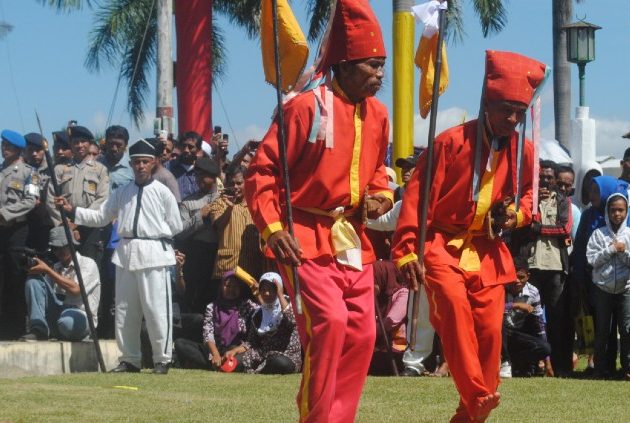 Buja Kadanda
Buja Kadanda
Fourth, there is the Buja Kadanda dance, as a traditional dance that is included in the traditional arts of West Nusa Tenggara.
This dance, which depicts two soldiers at war, is of course performed by two male dancers.
In which, the dancers will wear costumes like soldiers, which are equipped with properties in the form of spears and shields.
The movement of this dance is also a self-defense movement, so special skills are needed to be able to dance it. This dance, which is also known as Mpa’a Buja Kadanda, was basically created to appreciate and commemorate the services of the Bima soldiers in fighting to defend their area.
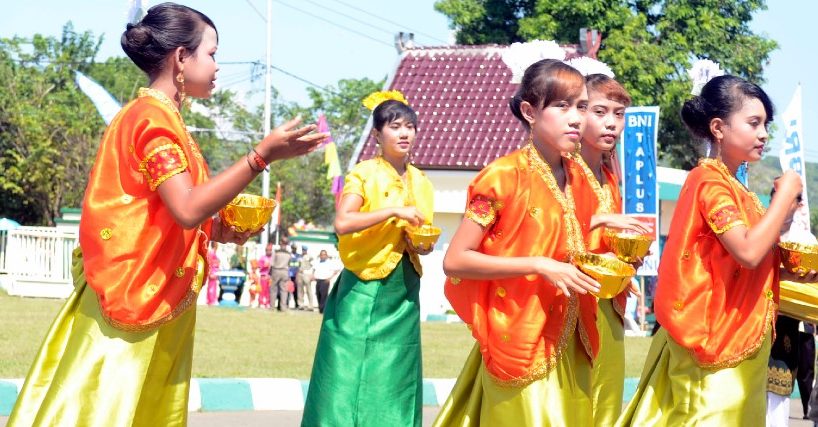 Wura Bongi Monca
Wura Bongi Monca
Next is the wura bongi monca dance. This traditional dance, which also grows in the Bima tribe, is a dance of sowing yellow rice which is often used as entertainment, for Bima’s traditional events.
To be able to dance this dance, it takes four to six girls who perform this dance with graceful movements, to attract the attention of the guests who come to the land of Bima. Interestingly, the wura bongi monca dance has developed since the time of the Sultanate of Abdul Khair Sirajuddin.
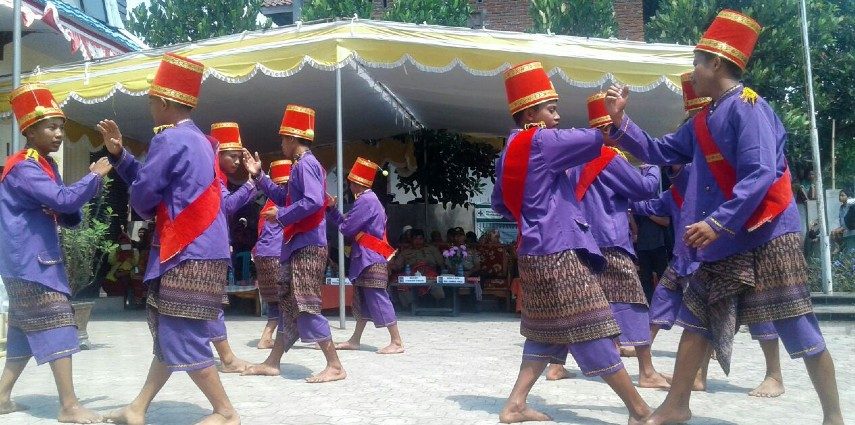 Rudat
Being one of the dances that is thick with Islamic nuances, the rudat dance is usually displayed in various commemorations of Islamic holidays, such as the commemoration of the prophet’s birthday, circumcision, Isra Mi’raj, khatam Al-Quran and so on.
Rudat
Being one of the dances that is thick with Islamic nuances, the rudat dance is usually displayed in various commemorations of Islamic holidays, such as the commemoration of the prophet’s birthday, circumcision, Isra Mi’raj, khatam Al-Quran and so on.
Not only that, the Islamic nuance in this dance can also be seen from the costumes worn by the dancers, as well as the songs that accompany the performances. If you look at history, the strong Islamic nuance of this rudat dance is caused by previous scholars, who used this dance as a medium to spread Islam.
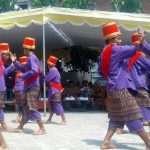
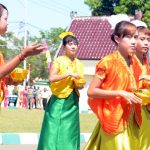
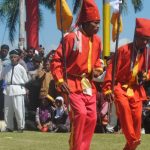
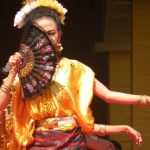
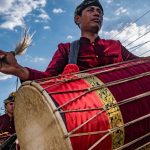
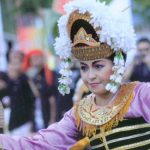












Tradition
By definition, tradition is a habit of an area that has been carried out for a long time and has become part of the life of a community group. More than that, tradition is also defined as something that is passed down by ancestors to subsequent generations from time to time. For West Nusa Tenggara itself, it has many traditions. Some traditions that are part of the traditional arts of West Nusa Tenggara, which include:
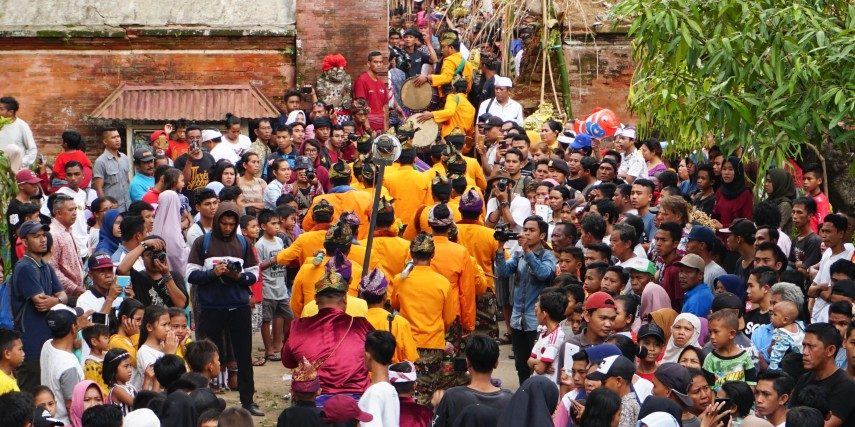 Perang Topat
Perang Topat
Perang Topat, Topat war is a tradition of the Sasak people in the form of ritual ceremonies, which are carried out as a form of gratitude to the creator, for the prosperity given, such as fertile land and rain.
This ritual ceremony is carried out by the Sasak people every year, at the time of the sixth full moon according to the Sasak calendar, or around November-December in Lingsar Park, after the completion of “Pedande” worship, namely during the “Rokok Kembang Waru” period at around 17.30 local time.
The procession of this ritual ceremony can be said to be unique, because it is done by throwing topat (ketupat) at each other. So, do not be surprised if this ritual ceremony is given the name topat war, because the ceremony participants throw topat at each other.
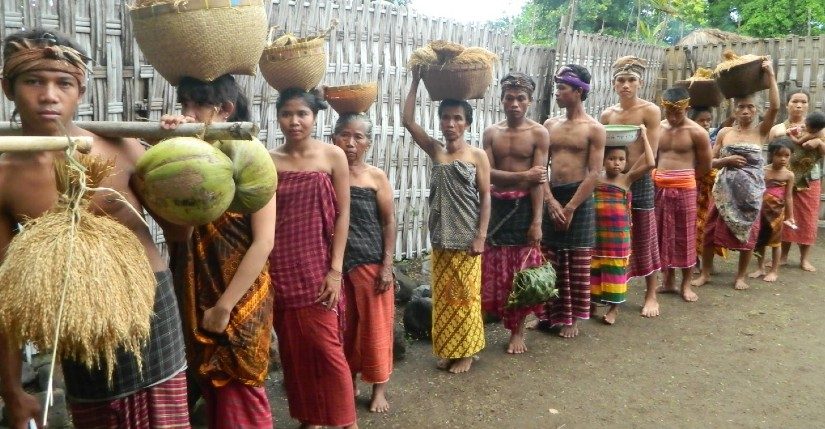 Maulid Adat Bayan
Maulid Adat Bayan
The next tradition that is part of the traditional arts of West Nusa Tenggara is the Maulid Adat Bayan.
This tradition, which originates from North Lombok Regency, is carried out by the local community every 15 Rabiul Awal, or to be precise three days after the commemoration of the Prophet Muhammad’s Birthday.
The series of processions from this tradition is very interesting, because the people have to pound rice using long bamboo rantok, and wear the traditional clothes of North Lombok Regency, namely Jong headgear and also kemben (long cloth used to cover the chest to the feet).
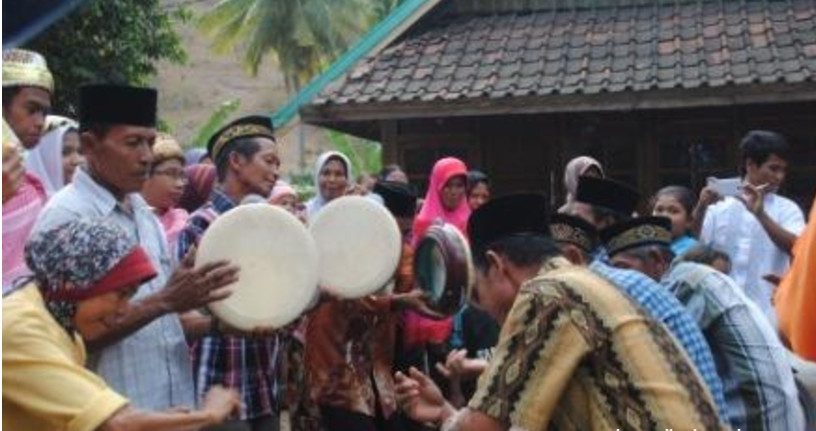 Dende Bunti
Dende Bunti
For those who have just heard of dende bunti, actually dende bunti is a tradition of the people of the City of Bima, in the form of a procession of sending the groom to the bride’s house.
In the procession, the prospective groom will be escorted by religious leaders and relatives, who wear clothes according to their social status.
Of course, during the delivery procession, the groom’s entourage will be accompanied by Arubana music and hadrah.
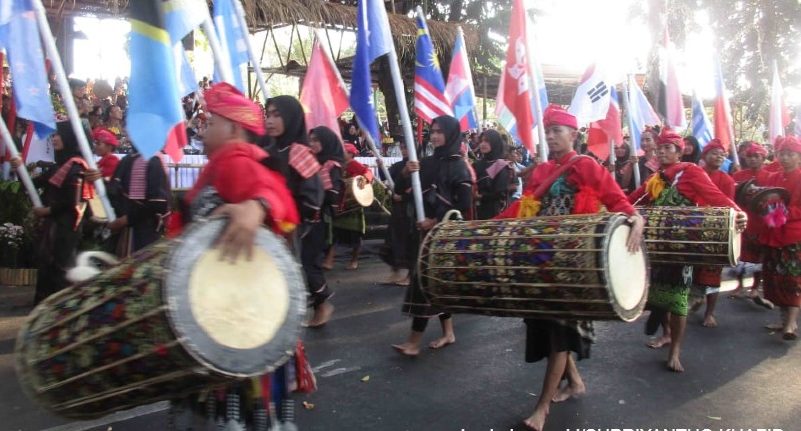 Sentek Panguri
Sentek Panguri
In 10th place there is sentek panguri, as a tradition which is also a traditional art of West Nusa Tenggara.
The word “panguri” in sentek panguri itself, is an extension of the word “kuri” which means soft, polite and smooth speech.
The word is usually said to give encouragement to the Sultan of Sumbawa, Dewa Masmawa.
However, in their traditional procession, each group will make offerings in accordance with their traditional obligations.
 U’a Pua
U’a Pua
As a tradition that is also influenced by Islamic teachings, the U’a Pua Ceremony is usually carried out together with the commemoration of the Birthday of the Prophet Muhammad, for seven consecutive days.
Not only that, this traditional ceremony will also be coupled with several cultural arts attractions from the Mbojo Tribe (Bima). The U’a Pua ceremony will begin with a parade carried out from the Bima Palace, which is attended by the entire Sultanate Army, the palace family to the Bima traditional arts group along with two Lenggo dancers.
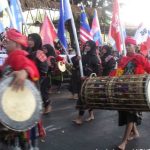
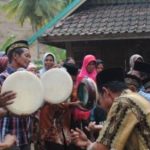
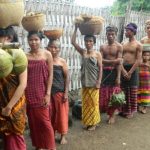
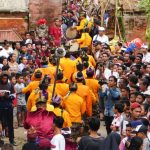
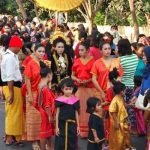
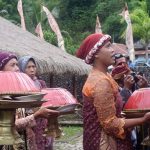
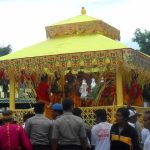












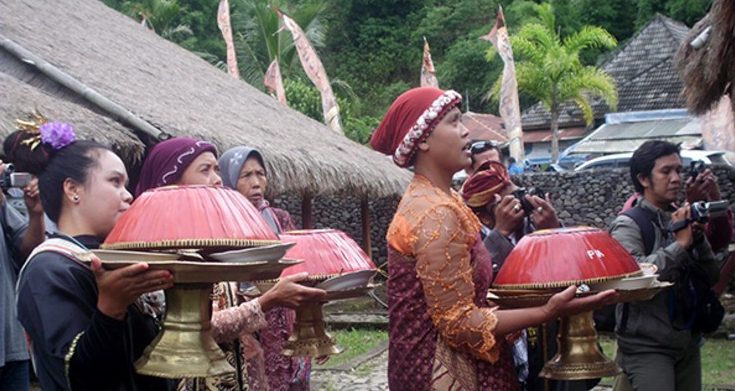 Mengayu-ayu
Mengayu-ayu
Mengayu-ayu is one of the traditions in the form of traditional ceremonies originating from East Lombok Regency.
This traditional ceremony is held by the people of Sembalun once every three years.
The presence of the Mengayu-ayu traditional ceremony is intended as a form of gratitude for the people of Sembalun, because they are given abundant produce as well as the hope of always getting blessings, in order to avoid danger and other unwanted things.
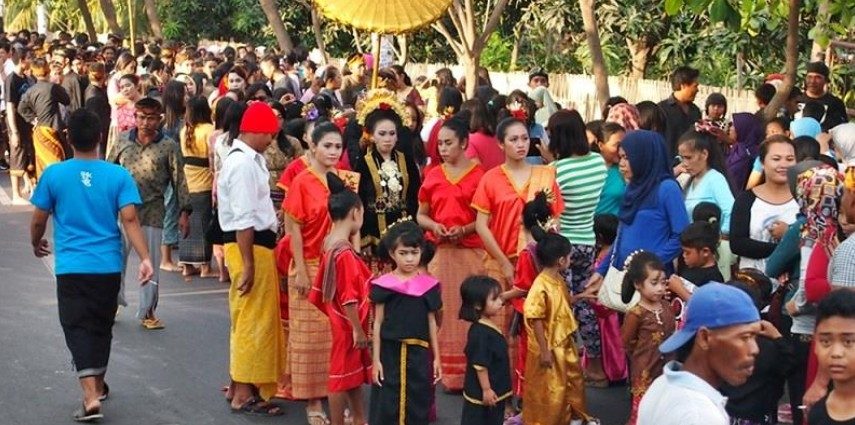 Nyongkolan
Nyongkolan
Finally, there is nyongkolan, which is a tradition of the people of Central Lombok Regency.
Nyongkolan itself is a traditional tradition in the wedding procession, in which the bride and groom will be paraded from the groom’s house to the bride’s house, wearing local traditional clothes.
Uniquely, not only the bride and groom are paraded, but the family and relatives of the bride and groom are also paraded with the bride and groom. And usually, during the procession they will bring some of the garden produce to give to the bride’s family, such as fruit and vegetables. Later, this nyongkolan tradition will be accompanied by the accompaniment of traditional Sasak music, namely gamelan and drum beliq to add to the crowd and excitement of this tradition.
Kabupaten & Kota
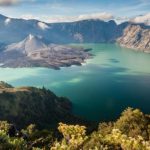
Lombok Utara
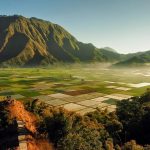
Lombok Timur
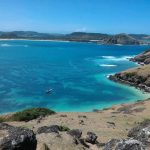
Lombok Tengah
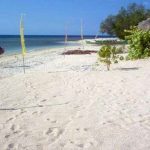
Lombok Barat
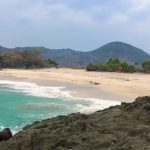
Bima

Dompu

Mataram
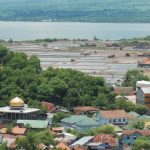
Bima
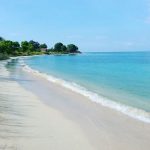
Sumbawa
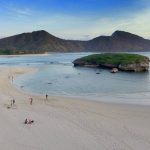
Sumbawa Barat

Lombok Utara

Lombok Timur

Lombok Tengah

Lombok Barat

Bima

Dompu

Mataram

Bima

Sumbawa

Sumbawa Barat

Lombok Utara

Lombok Timur
Culinaries
Not only its natural panorama is a tourist destination, West Nusa Tenggara (Nusa Tenggara Barat – NTB)also has a variety of culinary delights that are worth trying. What are the West Nusa Tenggara Culinary Tours that are said to be eaten while in West Nusa Tenggara.
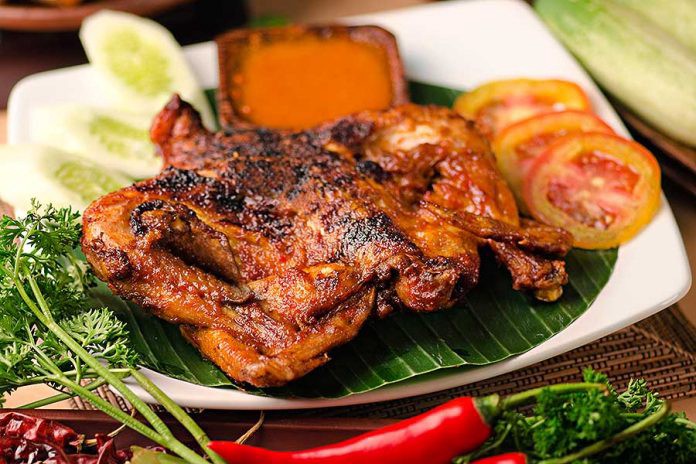 Ayam Taliwang
Ayam Taliwang
The first typical food of NTB is Ayam Taliwang, Taliwang Chicken. This NTB special food is a very famous food in West Nusa Tenggara, namely on the island of Lombok.
Taliwang chicken is a food made from chicken that has been given a typical Indonesian seasoning which is rich in spices. This Taliwang Chicken is not only famous in the NTB area, this Taliwang chicken specialty is also a Balinese food. The taste is so good that not many people like this food.
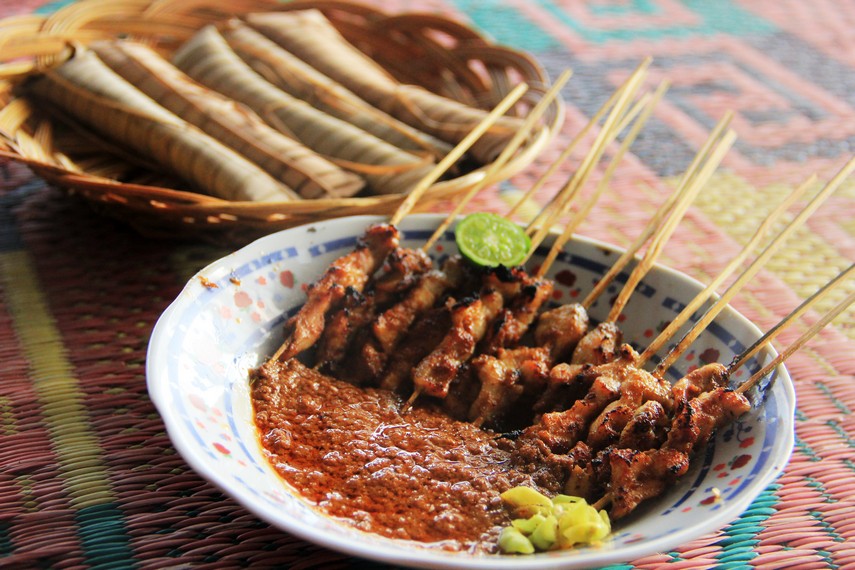 Sate Bulayak
Sate Bulayak
The typical food of NTB which is next is Sate Bulayak. One typical food is different from satay in general. If often a lot of satay is made from goat meat or chicken meat, but for Sate Bulayak it is made from beef.
This NTB specialty food is nicknamed Sate Bulayak because in serving it, beef satay is also given lontong or the people of NTB usually call it bulayak.
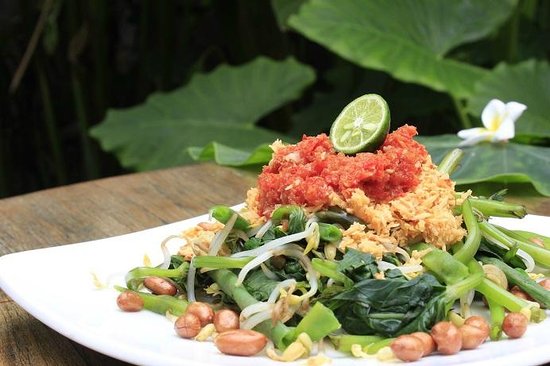 Plecing Kangkung
Plecing Kangkung
Plecing Kangkung is one of the most famous foods among the people of NTB itself. This typical NTB food is usually a complementary dish for Taliwang Chicken.
This typical NTB food is different from the typical food in other districts. although there are not many similar foods made from kale but this one food has a fairly unique presentation technique. If not very little food is served while the food is still hot, but Plecing Kangkung is served cold and added with tomato sauce with a fresh and sweet taste.
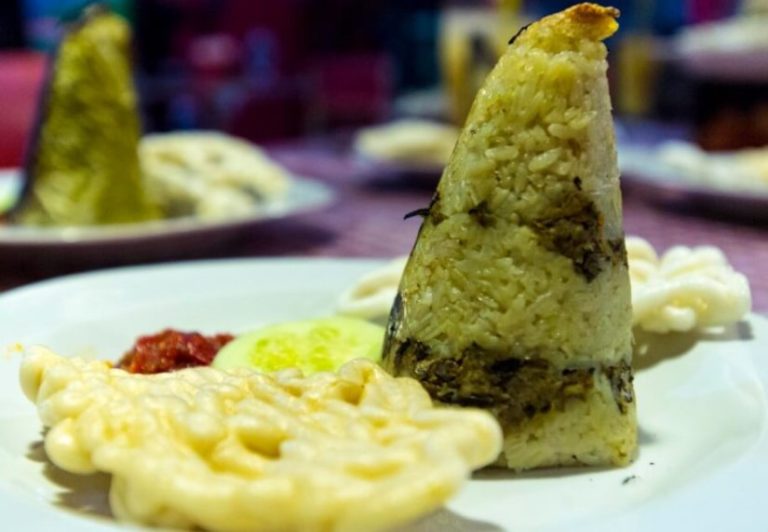 Jaje Tunjak Lapis Poteng
Jaje Tunjak Lapis Poteng
The typical food of NTB which is then a snack that is often enjoyed by the people of Lombok. This special food is made from sticky rice that has been mixed with grated coconut which is then steamed with a lot of extra salt for flavor. Poeng itself is a sticky rice tape that has been combined with fresh leaves during the manufacturing process.
 Sate Pusut
Sate Pusut
Typical food of West Nusa Tenggara which is next is Sate Pusut. Sate Pusut is a typical cuisine of NTB which is almost similar to satay in general. The slices of meat in Sate Pusut are relatively larger than other satays. This satay is seasoned with special spices that are rich in spices so that it makes the taste of this typical NTB food special.
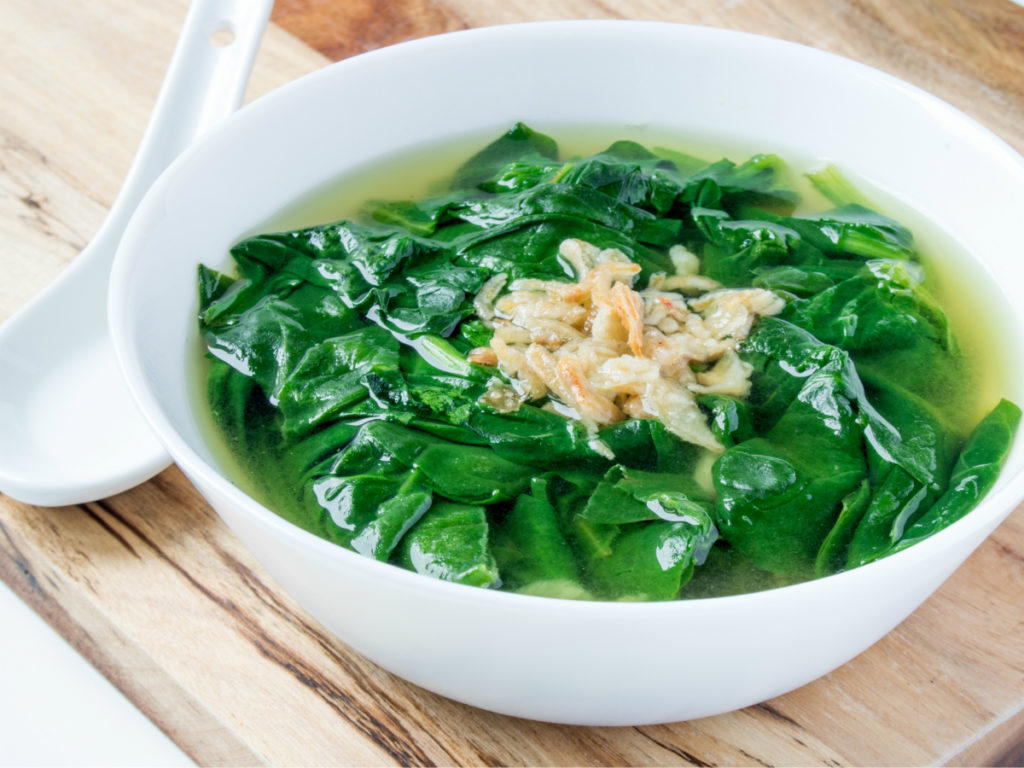 Kelaq Kelor
Kelaq Kelor
Kelaq Kelor is one of the typical foods of West Nusa Tenggara which is of course made from the basic ingredients of Moringa leaves as a vegetable. Kelq Moringa is usually cooked using a clear sauce that has been given a special seasoning so that the taste of this special food becomes more delicious and fresh.
Nasi Kotaraja
The typical food of NTB which is next is Nasi Kotaraja. In terms of appearance, this typical NTB food is like ordinary rice in general. But don’t ask if it’s a matter of taste, because this NTB Special Food has a unique unique taste that you won’t find anywhere else.
Kotaraja rice itself is rice served with side dishes, don’t make it difficult. The side dish is not rarit itself is a side dish made from processed beef that has been fried with lots of secret concoction spices.
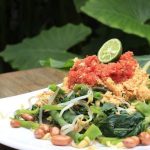

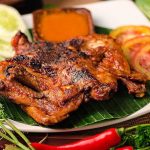

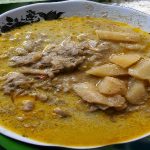
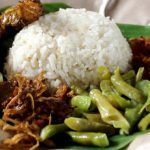

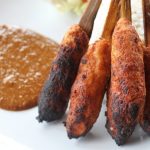
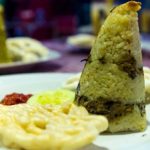












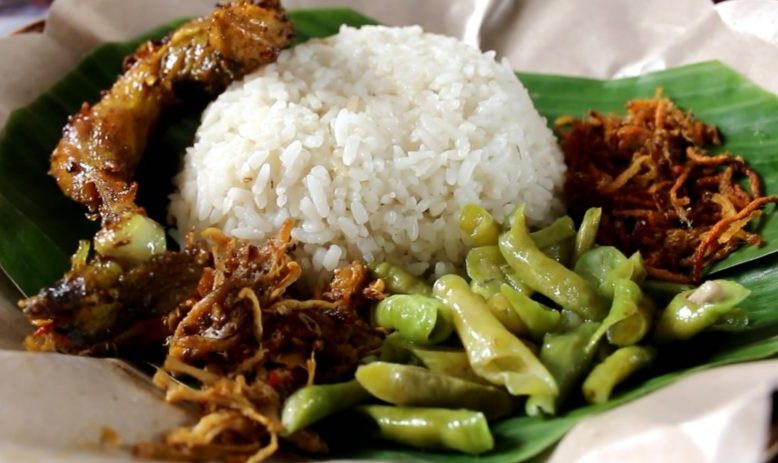 Nasi Balap Puyung
Nasi Balap Puyung
Nasi Balap itself is one of the typical foods of West Nusa Tenggara, precisely from the Central Lombok district. Nasi Balap Puyung is a rice served with a mixture of meat sauce, fried soybeans, and creamy fried potatoes. This special food is very popular with a spicy taste with the addition of special spices from the Sasak tribe.
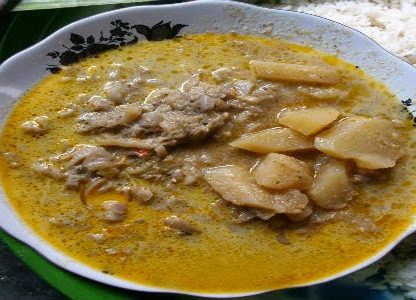 Ares
Ares
The typical food of West Nusa Tenggara that is no less delicious is Ares. This food is a typical vegetable from the Lombok district. Ares itself is made from the basic ingredients of young kapok banana trees that have been mixed with special Lombok spices. In the past, Ares was only served during certain traditional ceremonies, but along with the development of the era, this food is no longer found in many food stalls in the NTB district.
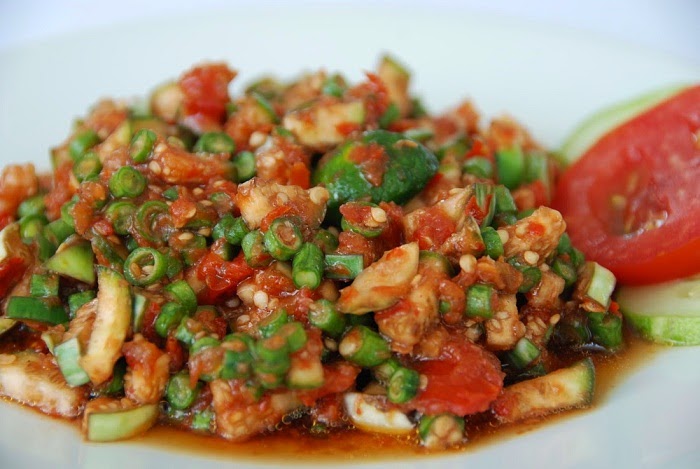 Beberuq Terong
Beberuq Terong
This typical food of West Nusa Tenggara is a food made from raw basic ingredients in the form of raw round eggplant or ordinary eggplant that is burned first.
Beberuq Terong is often made with the same spices as the ingredients for making plecing kale. This food is no longer sold in various food stalls in the NTB area, so those of you who want to taste it don’t need to be confused to look for this one typical NTB food.
Yep, that’s some of the typical West Nusa Tenggara food menus that you must try when you’re on vacation to NTB or just stopping by. Those who claim to have been to NTB must know this delicious special food.
